Since 2008, our small team of enthusiastic television veterans, supported by stories, photos and videos from many of the pioneers, is providing the basis for the content on this web site.
There is now an ever increasing list of oral history contributors…
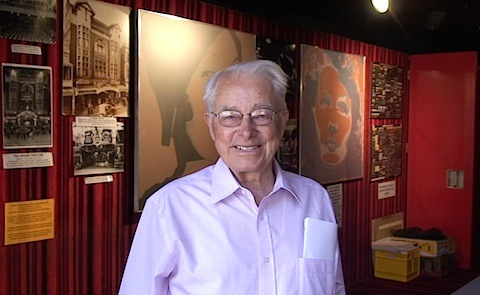
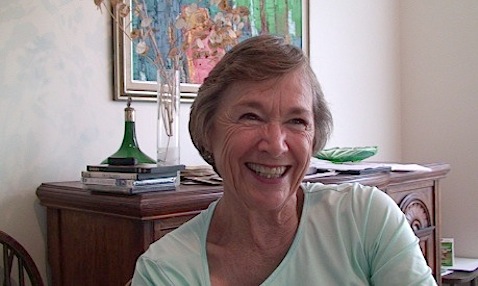
Carolyn Noble (Tannock)
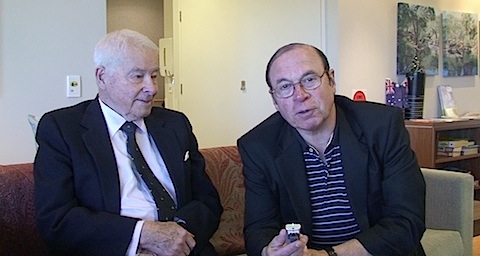
Sir James and Gary Carvolth
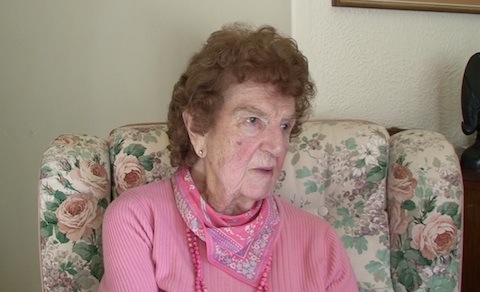
Coralie Condon
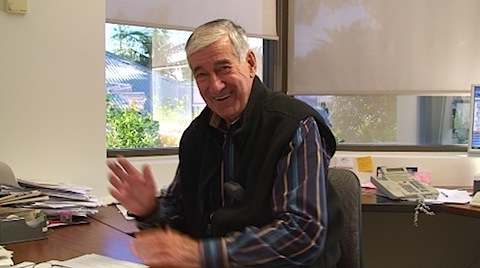
Darcy Farrell
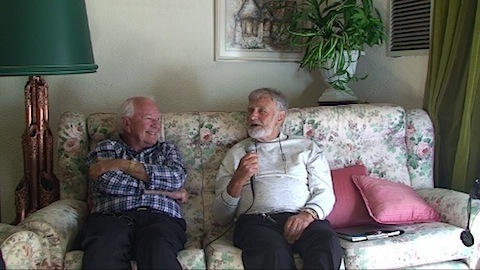
Kevin Campbell and Max Bostock
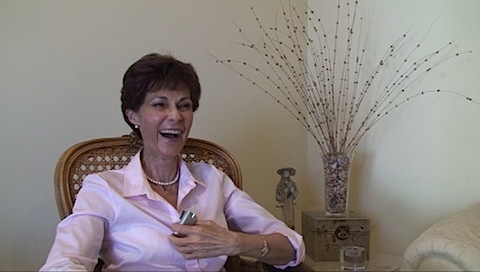
Trina Brown (Williams)
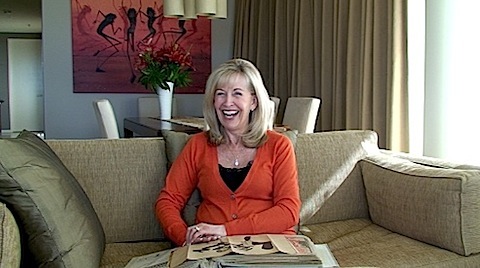
Sandy Palmer (Baker)

Audrey Barnaby (Long)
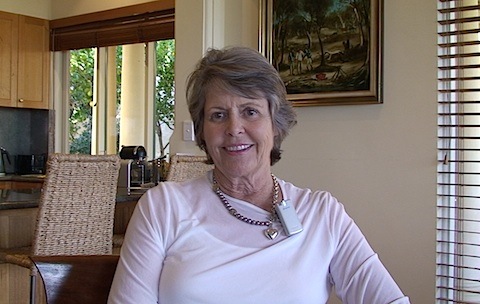
Elizabeth Cater (Black)
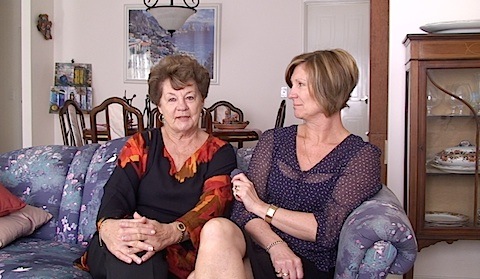
Shirley Halliday and Sharyn Hatch
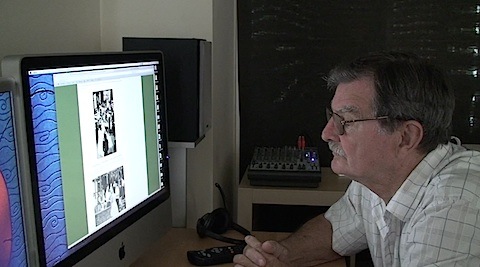
Kevan Johnston
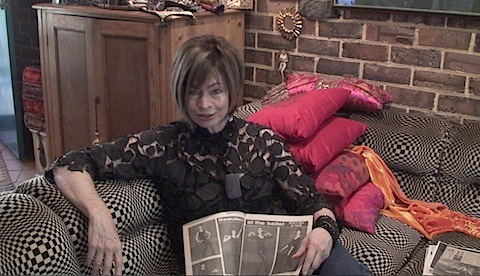
Danni Harford
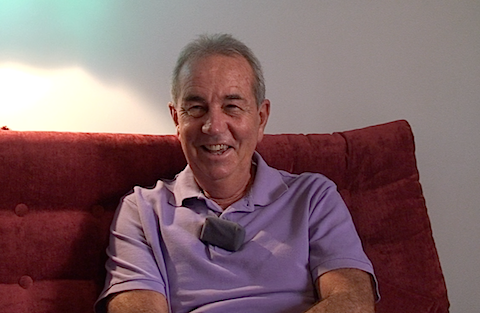
Brian Smith
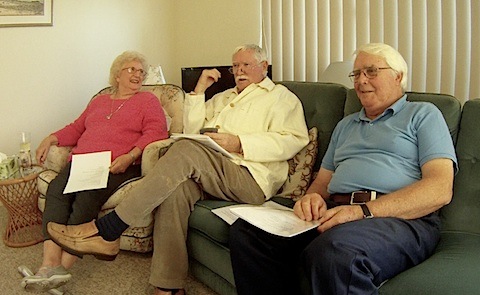
Audrey with Gordon McColl and Richard Ashton
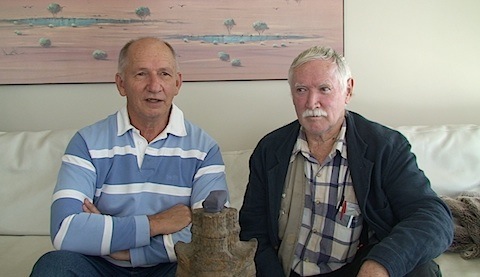
Steve Lumsdaine and Gordon McColl
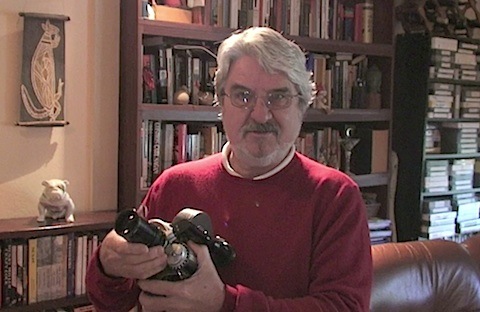
Peter Goodall
We’ve also received valued video content from not only Seven, but also Greg Byrne, Bob Finkle, Keith Spice, Vic Jones, Janet Boyd (Ladner), Danni Harford, and many more. Photos have been coming from all quarters, to illustrate the many stories that were written by former colleagues.
TVW Story Gathering and Retrospect
Since 2008, the WA TV History team has been busy researching the local Western Australian television heritage and recording the oral histories of many of the pioneers.
It’s a big task, and we’ve started with the first station to open in this state. Eventually, we’ll cover all stations equally.
So far we’ve recorded Sir James Cruthers (interviewed by Gary Carvolth), Max Bostock (chief executive officer), Darcy Farrell (news editor), Coralie Condon (producer/presenter), Trina Brown (presenter), Carolyn Noble (presenter), Sandy Baker (presenter), Stephanie Quinlan (presenter), Elizabeth Black (presenter), Shirley Halliday (choreographer), Kevan Johnston (choreographer), Danni Harford (choreographer), Brian Smith (choreographer), Reg Whiteman (Fat Cat), Steve Lumsdaine (lighting), Gordon McColl (director), Keith Mackenzie (director), Peter Goodall (news cameraman) and Kevin Campbell (managing director), presenter Audrey Long (Barnaby), and the list is growing fast.
In a sense, this is a video progress report on what we have been doing.
At times there may seem to be a lack of activity on this site, yet behind the scenes we’re busy recording the oral history of many of our industries participants and researching many of the programs and events that took place over the years.
There is so much depth to the Channel Seven story, that most of our time has been concentrated in that area. Though, it is our desire to eventually cover all other station equally.
Meanwhile, the State Library of WA will be mounting a WA Media History exhibition that they’ll host from August through to November this year. Professor Mark Balnaves of Curtin University and Dr. Sarah McQuade of the Battye Library are part of the team preparing this exhibit. Mark is also writing a book on Sir James Cruthers and TVW.
Our job will not be done until we cover every aspect of TVW during those halcyon days leading up to the take over by Robert Holmes à Court, and the dramas which followed with Skase, to the present day. Then the same needs to be done with the ABW-2, STW-9 and NEW-10
We’re even looking beyond, to how television is likely to evolve into the future.
Potted history of TVW leading up to the 50th anniversary
- Lloyd Lawson related to Peter Harries the story of being appointed TVW Programme Manager, where on Boxing Day 1958, TVW’s Chief Engineer Graham Davey knocked on Lloyd’s front door and asked if he was interested in flying back to meet the TVW Board of Directors, who in turn selected Lloyd for the position.
- Coralie Condon, was offered a job in early 1959 by the late Brian Treasure, the newly appointed Sales Manager of TVW7, but without anything being firm she went to Sydney to pursue her own interests. Three weeks later a telegram requested that she meet the newly appointed Programme Manager Lloyd Lawson at the Australia Hotel in Sydney, and during this meeting she thought “there’s no place like home”, so Coralie returned to Perth and agreed to work for TVW. In the 10 years she worked with TVW on a permanent basis she hosted a woman’s session called Televisit and produced children’s, women’s and nightly variety programs. Coralie wrote The Good Oil, which was broadcast in 1965. Jill Perryman played the lead. The production was directed by Max Bostock with the choreography and male lead performed by Jill’s husband Kevan Johnston. In 1993, Coralie was granted a Medal of the Order of Australia in recognition of service to the entertainment industry.
- On Monday August 31st, 1959, the test transmissions were advertised for the first time, featuring the TVW test pattern being broadcast at full signal strength. Richard Ashton was assisting Phil Salinger at the transmitter. Full power trade transmissions commenced on September 4th, with the first trade transmissions emanated from the studios on the evening of September 17th.
- David Farr, aged 22, was the first news reader-announcer chosen for TVW. He was involved in general announcing, news reading, weather presenter, commercials, women’s afternoon host, teenage program, quiz show compere, variety show compere and children’s show.
- David was the first voice, during test transmissions, that launched Channel 7 from a tiny office at the West Australian Newspaper’s building in St. George’s Terrace, reading voice-over news bulletins from that tiny office, which was virtually in the cellar down in the old Cadbury Chocolate offices, under WA Newspapers. News editor Darcy Farrell explained that newsreels were flown in by the CBS-ITN world service. The half-hour service started with a news bulletin read by David Farr and then went into a world newsreel coverage. Darcy Farrell directed the soundtrack recording for an these early film productions, assisted by Keith ‘Digby’ Milner (cine cameraman) operating the film projector, David Farr (announcer) providing the narration, Jim Healy (film editor) playing the gramophone records, while Tom Hall (cine cameraman) records the content on a quarter inch Byer tape recorder, for later synchronising with the 16mm film. This early activity was taking place before the TVW studios at Tuart Hill were completed. The local film was processed in a very crude, but brilliant way by Tom Hall. Darcy advised that when they moved out to the studios at Tuart Hill, they were able to get into it in a proper way. “We were using the Auricon sound on film track, and we had Arriflex cameras (these were straight newsreel silent cameras) and two or three smaller cameras like the Paillard Bolex and the Bell and Howell.”
- David Farr’s sister, Janet, had secured a position as secretary to the Programme Manager Lloyd Lawson. She worked for TVW in the very early years for approximately 3 years starting in 1959 when the office was in the basement of Newspaper House in St. George’s Tce. in Perth. This office was temporary whilst the studios were being built at Tuart Hill. There was very little room and hardly any staff. Janet remembers going through lots of applications for television auditions for news commentators and other staff. “Making it more personal for me was the fact that my brother David was one of the applicants for a news commentators position, and turned out to be the first one of these to be appointed. I still remember Lloyd’s surprise when I admitted David was my brother. As well as secretarial work, I became Script Assistant for live teen music shows. For a time in the Record Library I selected background music for news stories. I appeared with Lloyd Lawson in a commercial for a diamond ring. I was even a kitchen assistant in a cooking show a few times. The job certainly had variety.” Brian Williams kindly added, “I recall, Jan was LLoyd Lawson’s secretary from the outset. I have a strong feeling Marion Leyer joined TVW to be Max’s P.A. a few months in, while down the corridor in Production sat Lloyd, Jan Farr, John D Brown, Jean Hunsley, Coralie Condon, Penny Hoes, Wendy Nevard and moi! At times it seemed a little crowded and later on the crowd split up.”
- Rolf Harris was appointed to head the children’s programming. Penny Hoes pointed out that, “Children’s Channel 7 was based on a UK children’s program called “Blue Peter” which had been running very successfully for about a year. It was a mixed format of entertainment and more instructive items, and we also included filmed inserts… these were presented with a ‘voice over’ commentary by Rolf. We had lots of different contributors including Harry Butler and Len McKenna on wild life, Pat Thomas on pets and their care, Colm O’Doherty who was a story teller and so on. Rolf was entirely responsible for the programme content and production (and presentation on air of course), while Beverley Gledhill did the programme direction – and I was script assistant and general dogsbody, but a very happy one.” “Beverley Gledhill returned to the ABC in Sydney after about 10 months and I took over the programme direction, and when Rolf went back to the UK I took over the production as well. Initially this was with Jim Atkinson and Judy Lee as co-presenters.”
- The first director at TVW was a woman named Beverley Gledhill who came from (and returned to) the A.B.C. in Sydney. She directed the opening of the Station, which was fully rehearsed and run-through the night before being put to air. The presentation was flawless. The first Production Assistant was an English woman named Penny Hoes who had British television experience.
- John D. Brown came across from the United States to work at TVW in an advisory capacity, where he went through the protocol explaining how it all worked. Everyone referred to John, when they didn’t know what they were doing. John D. Brown and Rolf wrote the words to “Six White Boomers” together.
- The first two cameramen were Gordon McColl and Richard Ashton when TVW started. Steve Lumsdaine was on lights, and he went on to marry the lovely Elena Giugliarelli. They’re apart now.
- Alex Stewart was TVW’s chief audio operator who trained many of the early audio operators, such as George Baker and Colin Gorey, before going on to be the Chief Engineer of BTW3 in Bunbury.
- Vin Walsh was Seven’s first weather man, a retired meteorology officer from the RAAF. He drew up the weatherboards from details supplied from the Bureau of Meteorology, as in those days there were no computer generated graphics.
- The first edition of TVW’s variety show Spotlight was broadcast on the opening night, Friday 16th October, 1959. The editions that followed were broadcast each Thursday from 10 to 10.30pm. It was a half hour variety show written and produced by Coralie Condon, directed by Beverly Gledhill and compered by Phillip Edgley. Acts on the show included Guys and Dolls, which consisted of Dorothy and Bert Shaw and Judy Schonell and Reg Whiteman. Other performers on Spotlight included Frankie Davidson, Colleen Clifford, Rolf Harris, Rhythm Spinners, Rhythmaires, The Four Notes, Bob & Shelda Wrightson and vocalist Maureen Corless. The Harry Bluck Band provided the musical backing.
TVW’s Opening Night Programs
When TVW Channel 7 in Perth, Western Australia, opened on Friday 16th October, 1959, there were only 3387 licensed TV sets. However it was estimated that each household had at least 12 to 15 watching the opening, which would amount to some 40,000 viewers.
Many who are viewing this video now will have missed it then, hence the reason for enacting the first nights programming, to give people a taste of television way back then.
More can be found on the station opening at: http://watvhistory.com/2009/03/tvw-opening/
Opening Night of TVW-7 in Perth, WA
Former TVW personality Audrey Long (Barnaby) reminiscences with TVW Channel Seven opening night studio cameramen, Richard Ashton and Gordon McColl, about the opening ceremony on the evening of Friday October 16th, 1959. Both men became studio directors over the ensuing years. Brief comments are also made by the inaugural general manager Sir James Cruthers and first news editor Darcy Farrell.
A twenty minute documentary on the origins of TVW preceded the 7:30pm opening ceremony, followed by “Leave it to Beaver” at 8pm, “Sea Hunt” at 8:30pm, “News and Weather” at 9pm, “Father Knows Best” at 9:15pm, WA’s first live variety show “Spotlight” at 9:45pm, “Gunsmoke” at 10:15pm, a report on how Perth received TV, News and Weather at 10:45pm, “Perry Mason” at 11pm and “Epilogue” a five minute reading from the Bible by TVW’s programme manager Lloyd Lawson.
Kevin Campbell (AM) – TVW 1964 to 1999
Professor Mark Balnaves of the Curtin University in WA introduces Kevin Campbell AM, the former Chairman and Managing Director of TVW Enterprises Ltd (Channel Seven Perth, Western Australia).
TVW was a case where talented individuals could rise through the ranks to fill the highest roles. Most executives at some point or other gained experience close to the work face. None more so that Kevin Campbell, who started as a technician and later became the Chairman and Managing Director. Where else could the person in the top position have the skills to walk into an operational area and demonstrate a full knowledge and experience in that area?
For 35 years, Kevin was involved in the broadcasting industry in Australia. On completion of a technical cadetship through the Post Master General’s Department, Kevin joined TVW as an technician in 1964 and worked continuously with the company, in its many forms, until his retirement in 1999. In that time he was appointed General Manager SAS Channel 7 Adelaide (1977). From 1988 to 1991 he was Managing Director of the Seven Television Network and from 1991 to 1992 he was Chairman of TVW and from 1992 to 1999, Chairman and Managing Director of TVW Enterprises Ltd (Channel Seven Perth). In 1998, Kevin was awarded a Member of the Order of Australia (AM), for his contribution to broadcasting and his community service activities.
Kevin Campbell – (1964-1999 Cruthers, Bell, Quintex, Stokes eras)
▪ 1985-1989 General Manager of TVW Enterprises Ltd (Channel Seven Perth)
▪ 1989-1991 Managing Director of the Seven Television Network
▪ 1991-1992 Chairman of TVW Enterprises Ltd (Channel Seven Perth)
▪ 1992-1999 Chairman and Managing Director of TVW Enterprises Ltd (Channel Seven Perth)
This recording was made on Monday 23rd of May, 2011, at the home of TVW pioneer Coralie Condon OAM, who kindly played hostess to a gathering of colleagues when two former senior executives Max Bostock (MBE) and Kevin Campbell (AM) met with Professor Mark Balnaves, and fellow television veterans, to record an oral history of the early days at TVW Channel 7 in Perth, Western Australia. Professor Mark Balnaves is the Senior Research Fellow in New Media at the Curtin University of Technology. Also present were Audrey Long (formally Barnaby) and Betty Bostock, with Richard Ashton, Gordon McColl and Ken McKay recording the event.More information can be found at: http://watvhistory.com/2011/05/oral-history-recording-of-senior-seven-perth-e…
- Lloyd Lawson would direct Rolf Harris’s “Relax With Rolf” on Monday nights, which was produced by Rolf and Coralie.
- Brian Williams directed such early series as ‘Tuesday Date’ and ‘Saturday Showtime’ before creating a number of memorable specials such as ‘Do You Remember’, ‘Songs of the Wars’, ‘Invitation to the Dance’, ‘The Nutcracker’, ‘Baptism of Fire’ and ‘Bradman’ to mention a few of the many shows Brian was responsible for.
- In 1960, Max Bostock commenced with TVW as Musical Director on the Tuesday Date and Saturday Showtime series. Max also had excellent contacts with many east coast talent including Dorothy Baker, Frankie Davidson and Dig Richards. The Gary Carvolth hosted “Club Seventeen” was directed by Max, and the musical elements of In Perth Tonight and Invitation to the Dance. Max also played a key role in setting up the highly successful annual TVW Telethon. In later years, Max executive produced or had a strong influence over most TVW productions, setting up a Special Projects Department to organise and execute a wide range of events, ranging from the Birdman Rally, Milk Carton Regatta, the many Christmas Parades, the grand opening of The Perth Entertainment Centre, the 1980 World Professional Ballroom Dancing Championships, TVW arena productions and grandest of all the 1979 Miss Universe at The Perth Entertainment Centre. He was to rise in rank to that of Chief Executive Officer during the halcyon era of Sir James Cruthers and Brian Treasure. He was awarded the MBE in 1980. Max considers that one of the most pleasurable project he ever worked on was directing Coralie Condon’s musical comedy “The Good Oil”.
- A typist named Marion Greiling (later Leyer) also moved up the ranks. In the early 1960’s she was a Production Assistant on Children’s, Women’s, Teenage and Tonight Shows. Marion typed for Lloyd Lawson, and then collated music for the News and looked after APRA requirements. As well as being Max Bostock’s production assistant, she also worked in make-up. Between 1963 and 1971 Marion was Producer/Director of the live Children’s Channel 7 – involving talent quests, quizzes, hobbies, nature studies, games etc. Also produced weekly quiz programs POST OFFICE and IT’S ACADEMIC. From 1971 to 1975 Marion Directed and co-produced the national half hour children’s variety program STARS OF THE FUTURE which received Logie Awards in 1972, 1974, 1975 and 1976. From 1976 to 1979 she Produced 24 hour TELETHON programs and CHRISTMAS PAGEANT plus weekly teenage program called HEY JUDE and various specials. Participated in the preparation of the 1979 MISS UNIVERSE and was Pageant Co-ordinator during the event – responsible for 74 delegates and 42 chaperones, their itineraries, hotel bookings etc. Then in October 1979 she was appointed Production Manager and continued in that position until she resigned from Channel 7 in 1985.
- A Western Australian named Jean Hunsley also proved her competence in the production field, rising from film librarian to script assistant, then on-air program coordinator to studio director. Her successful stand against wearing the obligatory uniform will be remembered by people of the era.
- “Teenbeat”, a late Saturday afternoon show, was compered first by David Farr, followed by Garry Meadows and Glenn Hitchcock. Teenagers from Wilkinson Dance Studio danced to rock-n-roll, with a Top Ten and the latest record releases. Local acts such as Pam Bradley, Brian Prior and Clive Higgins were backed by a local group, the Zodiac Allstars. Other performers included Bill Blaine and the Dynamics, guitarist Alan Ingham, and the Midnighters. The bands played no local material, all covers, the audience wanted songs they knew and the latest material from the US and Britain. There were two guest artists who performed two songs per show. The main band would often provide three or four numbers a show with vocal backing provided by The Rhythmaires. Olive Shearer and David Farr gave a demonstration of the Madison, a novelty dance that was popular in the late 1950s to mid 1960s. The program was directed by Brian Williams. Musical director was Max Bostock.
- David Farr and Dianne Briggs filled in as children’s show hosts while Harris spent a seven day motoring holiday in the South West.
- Tuesday Date hosted by David Farr filled the 9:30 slot on Tuesday evenings. Which seemed to be an attempt to make the compere act as a Perth counterpart of Melbourne TV personality Graham Kennedy, including an exchange with the producer. A noughts-and-crosses quiz segment was added to the show. Compere David Farr was assisted by show regulars Rolf Harris, The Rythm Spinners and the Max Bostock Quartet.
- Oriental Cavalcade presented talent from a touring stage company and was directed by Lloyd Lawson. It featured the Rudas Dancers and a cast of twelve different acts and compered by David Farr.
- Rolf Harris recorded “Tie Me Kangaroo Down Sport” in TVW’s Studio 2 with Colin Gorey as the audio operator. Alex Stewart was rostered off that day. The Rhythm Spinners provided the backing and opted for a fee rather than a percentage of the sales, not expecting it to be an outstanding success.
- Harry Butler had a lot to do with Children’s Channel 7. The West Australian Museum subsidised Harry to go out and bring back stuff, pictures of snakes and lizards and scorpions and so on.
- In 1960, Lloyd Lawson did three or four “Sunday Night With Bobby Limb” programs, when he came across from the east with a cast of twenty-six.
- In 1960, Carolyn Noble joined the station. Carolyn was chief Mouseketeer to 25,000 mice for the local Mickey Mouse Club, which followed Rolf Harris on Children’s Channel Seven, where Pat Thomas did the pets, Harry Butler did the nature segment, Len McKenna did wildlife and Scott Proper-John presented hobby time. Carolyn started work at TVW as a secretary at 10 o’clock in the morning and wore the same uniform as all the other girls at Channel 7. She mainly typed envelopes in the office, then around 4 or 4:30, would go down and take off her blue uniform blouse and put on her yellow T shirt, with ‘Carolyn’ emblazoned across the front. Carolyn’s first segment on TVW followed Rolf Harris, and was 15 minutes in duration. This consisted of about 15 children who came in and sat at the Mickey Mouse Club house and were interviewed on-air by Carolyn as their parents watched from home. Televisit was Coralie Condon’s program, that was a Wednesday, and Carolyn did a little bit on that. That was a very informative program and Coralie had wonderful people who would come along for various segments… some were regulars… some were not. In 1964, Carolyn Noble and Gary Carvolth won the best male and female personality Logie Awards for Western Australia. Carolyn recalls that Brian Treasure treated her like a daughter, and made her feel very special. She thinks that Brian was the vision behind very many good things that happened at Channel 7 in the early days. Carolyn remembers going in to see him one day and her hand was shaking so much when she showed him her engagement ring. In 1968, soon after her second baby was born, Carolyn returned to work on a Saturday morning children’s show which contained a young talent quest, with a judging panel, of which one was Coralie Condon, and there was Max Kay too. This evolved into Stars of the Future. It was originally shown on Saturday mornings, but later moved to a family viewing spot at 7pm on Thursday evenings. It was recorded on Saturday mornings. The talent show would run through the year and finish up with grand finalists. It had a great following here, and it won a logie too (four in total as Sandy Palmer continued on with the series). Carolyn thinks the show started about 1970, and in May 1971 it went to prime viewing time. Carolyn finished in 1974, when she was pregnant with her fourth baby, Sandy Palmer stepped into her shoes, taking over Stars of the Future.
- Gary Carvolth also joined TVW in 1960. Gary participated in most early live shows, from Children’s Channel 7, to the women’s programs, teenage shows to evening variety. He even participated in sporting panel shows and read the News. Gary presented the popular teenage show “Club Seventeen” from 1963 to 1964. During this same period he won two Logies for most popular personality on WA television. Then between 1965 and 1966 he presented the popular evening variety show ‘In Perth Tonight’. Gary maintained a production role when the show was later presented by Garry Meadows and Joan Bruce.
- Jim Atkinson started with Seven after Rolf Harris left, joining Carolyn Noble and Judy Lee on Children’s Channel Seven. Jim worked with Seven from 1960 till the end of 1967. Jim taught Audrey Barnaby’s son Marc to ride, and then tutored Audrey in the skill.
- Lloyd Lawson hosted the ‘Today’ show, which ran from the 14th of March 1960 to 9th of November 1965. Lloyd’s on-air team included Audrey Barnaby, David Farr and Gary Carvolth. They were later joined by Carolyn Noble. The series finished with O.B’s from the Floreat Forum and Victoria Park.
- Audrey Barnaby has enjoyed a close and continuous relationship with Coralie Condon from the 1958 stage production of Coralie’s musical comedy ‘The Good Oil’ to the establishment of the make-up section and on-air presentation for the woman’s programs. In 1960, all on-camera staff were asked to come up with program ideas, of which Audrey devised Shopping Guide, which proved to be an excellent introduction for new clients to television advertising. It was most affordable at only 15 pounds per minute. Other than national film advertisements, local advertisements were presented live from 1959 to 1962, until videotape replays became popular. Either presented live in the studio or a live booth announcer reading over a series of slides or caption cards. Audrey, along with David Farr and Gary Carvolth, were part of Lloyd Lawson’s team presenting the TVW ‘Today’ show, which ran from 1961 to 1965. On one memorable occasion Audrey Barnaby was marrying Geoff Long and Gary Carvolth and Carolyn were invited to the wedding but only got back to the studio at 5 minutes to 5… just minutes before the live Children’s Channel Seven. This cause a bit of stress for the production team at that time. Audrey joined STW in 1965, and Lloyd Lawson moved to STW in 1966, starting ‘Roundabout’ on that station. Audrey joined Lloyd on the program at the beginning of 1966, co-hosting with Veronica Overton. Stephanie Quinlan took over presenting Shopping Guide from 1965, after they trialed a number of others in this role. Stephanie later became the presenter of Televisit, when Coralie left Seven.
- Darcy Farrell points out that “Sport at Seven” was hosted by Syd Donovan and Frank Bird. Darcy remembers the television debut of Bob Cribb on that show. Syd introduced him along these lines: “Tonight we are introducing a new member to our football team. “Bob Cribb is just back from Melbourne where he reported on the VFL. “Over to you Bob.” Bob looked earnestly into the camera and began. His voice carried that sense of urgency and resonance. Rick Ardon would have envied Bob’s professional poise. Bob began this way: “Today I went to Perth Oval where the mighty Royals, the power team of the last decade, once again showed they will be a force to reckon with this season…..” Bob continued superbly for about 30 seconds. Then he looked up from his notes and eyeballed the camera. Taking his eyes off the notes proved to be disastrous. Bob’s jaw dropped, his mouth was agape. He froze… he dried up. Not another word fell from his lips. There was an eerie silence. That was Bob’s first – and only – appearance as a live match day reporter.
- In 1961, ‘Do You Remember’, a trip down Memory Lane of Perth in the 1920’s was directed by Brian Williams.
- TVW’s first Telethon following the disastrous Dwellingup fires of 1961.
- During the Christmas break of 1961, Jim Atkinson participated in an outback expedition with Harry Butler, Mark De Graff, Gerry Roberts, Roulien Schroeder and Gordon McColl.
- Vox Adeon Howard Letterbox Show
- Eric Walters joined Seven at the end of 1961, following the departure of Garry Meadows (who later returned). At first Eric shared the newsreading with Gary Carvolth, before becoming the main newsreader, with Gary venturing into hosting the teenage show Club 7 Teen and the evening variety program, In Perth Tonight. Richard Ashton reminisced about Eric’s last bulletin for TVW in which he read the news with spectacles minus the glass, to then conspicuously poke his finger through the frame to remove them whilst saying goodnight. Gordon McColl recalls that Eric was a most friendly chap who lived in Norman Street, Innaloo. Both he and his wife were noted for their hospitality and were great home entertainers. His first wife Shirley was a secretary at 6KY. When Eric left TVW to advance his career in England, David Low, the former TCN 9 and famous Movietone voice over man replaced him reading the Seven news.
- Broadcast in 1962, ‘Songs of the Wars’ was a cavalcade of songs and music sung and played by Australians in conflicts from the Boer War through World Wars I and II. It was directed by Brian Williams. Coralie Condon teamed up with Brian in the production. Coralie describes it as, “Songs of the Bloody Wars”, for it took so long to make.
- In 1962, Club 7 Teen with Gary Carvolth and hostess Elizabeth Cater. The show went live to air at 5 pm on most occasions, and was half an hour. Then introduce the Johnny O’Keefe show was introduced, with Gary and Elizabeth returning to wrap it up and sign off, which was about 6.30pm. The “Johnny O’Keefe Show” ran from 1961 to 1962, then was renamed “Sing Sing Sing”, which aired from February 1963 to October 1965. The early women presenters at Channel Seven were Barbara Robinson, Kath Lavan, Pam Leuba, Carolyn Noble and Elizabeth. All had a connection, they either knew each other at school, were friends, or lived within close proximity of each other.
- 1962 – Perth Commonwealth and Empire Games
- 1962 – “Viewpoint” with English actress Vivien Leigh who won two Best Actress Academy Awards
- In 1963, TVW won the Television Society of Australia award for best “Television News Item – MANHUNT”. In the midst of the public concern about serial killer Eric Edgar Cooke, it was Brian William Robinson aged 23 years, who caused the biggest manhunt in WA on February 9, 1963. Robinson had gone berserk during an argument with his father at their home, after he had heard an incest rumour that his mother was also his sister. He shot and killed a policeman who was called out to the disturbance, then killed the passenger of a passing car before making his escape in a taxi, forcing the driver to take him to the Gnangara Pine Plantation. Darcy Farrell points out that it was during one report from the scene that Bob Cribb became quite famous in journalism for his comment and I quote “the man dog killer is holed up in this bush”. In those days comments of that type were deemed to be sub-judice and contempt of court. Needless to say, both Bob and Seven were sued for contempt and the defence lawyer used Bob as the scapegoat to try to get an acquittal. Robinson was hanged at Fremantle Gaol on 20 January 1964.
- Eric Edgar Cooke nicknamed The Night Caller was an Australian serial killer, who from 1959 to 1963, terrorised Perth, by committing 22 violent crimes, eight of which resulted in deaths. Then in August 1963, Bob Cribb got the information first, even ahead of the legendary Daily News police roundsman Jack Coulter, that the police had found a rifle hidden in a bush in the grass verge of a suburban home in Mt Pleasant. Together Bob and Darcy Farrell decided that for the good of the community they would keep the information under wraps. Police waited for the owner to collect it, which Cooke did 17 days later. Ballistic tests proved the gun had been used to murder the 18-year-old university science student, Shirley McLeod, while babysitting for a family in Dalkeith. Cooke was caught and Darcy believes that Bob should be commended for never revealing the vital information which would have given him a national scoop. Cooke was hanged in Fremantle Prison at 8am on October 26, 1964.
- Darcy Farrell explained that Bob Cribb was also ahead of his time in recognising the great comedy talent of John Watts. Bob produced the J K Watts segments and became Wattsie’s manager. To this day, I’m still not sure who benefited the most: Wattsie or Cribbie?
- Broadcast in 1963, “Invitation to the Dance” was a one-off program, produced and directed by Brian Williams, with Sam Gilkison as his associate producer.
- 1963 – “The Nutcracker”, a version of Tchaikovsky’s ballet masterpiece directed by Brian Williams.
- 1963 – “Hootenanny” was a folk singing show with a rural setting built into TVW’s Studio 1.
- 1964 – “Baptism of Fire” a one-hour documentary focused on the first-ever naval engagement of the Royal Australian Navy when HMAS Sydney did battle with the German raider “Emden” off the Cocos Islands, which was directed by Brian Williams.
- 1964 – first Sandover Medal broadcast
- 1965 – “Bradman”, the the first documentary on Sir Donald Bradman, which was directed by Brian Williams.
- 1965 – “The Good Oil” by Coralie Condon and directed by Max Bostock.
- 1965 – “Club 7 Teen” with Johnny Young, directed by Gordon McColl.
- The first series “In Perth Tonight”, which ran from 1965 to 1966. Talent included Gary Carvolth, Lloyd Lawson, Bon Maguire, Eric Walters, Janet Prance, eastern states stars Graham Kennedy, Stuart Wagstaff and Mavis Bramston, and a host of other guests. It was first directed by Brian Williams, to be later directed by Richard Ashton and Max Bostock. A second series was hosted by Garry Meadows and Joan Bruce with Keith Mackenzie as the director.
- 1965 – STW Channel 9 opened on Saturday June 12th, 1965.
- 1966 – Trina Brown began with TVW. Carolyn Noble, was back for a brief stay after the birth of her baby, meanwhile Trina was kept under cover as a production assistant, until Carolyn finally left.
- 1966 – “Romper Room” with Miss Claire Neilson, directed by Gordon McColl.
- 1966 – “World of Football”
- Lloyd Lawson moved to STW in 1966, where he read the news and presented a woman’s program called ‘Roundabout’. Audrey Barnaby joined Lloyd on the program at the beginning of 1966, co-hosting with Veronica Overton.
- Jeff Newman joined TVW Channel Seven in 1967, following his move from STW Channel Nine. Max Bostock wisely kept Jeff on ice for six months till the memory of him being a STW person faded.
- 1967 – “Reach for the Stars” was hosted by Jeff Newman.
- 1967 – “Spellbound” with Garry Meadows and Martin St James, directed by Keith Mackenzie.
- 1968 – Trina had been Channel Seven’s weather girl for 14 months when she celebrated her 21st birthday on June 2nd, and became eligible to become an air hostess.
- 1968 – Captain Jim, Seaman O’Doherty and Taffy the Lion roles finish as Children’s Channel 7 paused after Children’s Day at the Royal Show. Taffy made a final appearance on Telethon. Trina got the itch to travel and joined Qantas as a air hostess. She travelled all over the Pacific with Qantas before getting homesick for Perth.
- 1968 – “In Perth Tonight” with Garry Meadows and Joan Bruce, directed by Keith Mackenzie.
- 1968 – “Miss West Coast” followed by “Miss Australia Beachgirl” and “Miss Australasian Beach Girl” which were originally hosted by Garry Meadows, with heats conducted at the various Perth beaches and the final at Beatty Park Pool.
- 1968 – “Perth’s New Faces” hosted at various times by Garry Meadows, Jeff Newman and Peter Dean. John Rennie with his satirical monologues was one of the many finds, who then went on to appear regularly on John Hudson’s “Your Town”.
- “Entertaining with Kerr” was produced in TVW’s Studio One with cooking personality Graham Kerr, who gained fame through his cooking show The Galloping Gourmet. He also wrote an abundance of cookbooks, and earned two Emmy Award nominations. His various TV shows were made in New Zealand, Australia, Canada and the US.
- 1968 – TVW presents Tea with Coronation Street’s Ena Sharples (British actress Violet Carson)
- In 1968, the first of the Annual TVW Telethons was held and starred Graham Kennedy, Johnny O’Keefe, Bobby Limb and Stuart Wagstaff, along with a volunteer cast and crew of hundreds. It ran for 20 hours and was produced by a production team head by Max Bostock, in which both Garry Meadows and Gary Carvolth played important roles. This historic charity program was directed by Keith Mackenzie.
- 1968 – Jack Nicklaus (United States) won the TVW sponsored Australian Open Golf Championship at the Lake Karrinyup Country Club.
- 1969 – Jeff Newman began hosting “It’s Academic”. This popular school quiz program ran for ten years from 1969 to 1979. He also hosted and produced Perth’s New Faces, a series of Letterbox, Reach for the Stars and many national beauty pageant shows.
- 1969 – Trina returns to Seven in January, but this time is joined by Percy Penguin.
- 1969 – “Beauty and the Beast” (presented from Perth) with host Stuart Wagstaff.
- 1970 – Sandy Palmer hosts “Earlybirds” and “Children’s Channel Seven”. Earlybirds was shown from 7am to 9am and continued through into the 1980s. It featured Fat Cat and Percy Penguin, with puppets Wilbur Worm and Sunny Sandgroper. There were two hosts, one male and one female. The show commenced with Trina Brown, followed by Sandy Baker (nee Palmer), Carolyn Noble, Ian Teasdale, Keith Geary, Sharon Dale, Peter Dean, Ann Sanders and others. It ran initially during the school holidays and then each weekday, until overtaken by the networked Agro’s Cartoon Connection.
- 1970 – John Rennie provides his common man philosophy on life.
- 1971 – Trina Brown left TVW on August 30. Trina was the children’s hostess, presented the Early Bird Show with Terry Willesee and Andrew Carroll, presented a series of Stars of the Future, filled in as hostess of Letterbox with David Farr, when Sandra Lucas was away, presented Shopping Guide, following in the footsteps of Audrey Barnaby and Stephanie Quinlan, performed lots of promotional work on weekends and was 7’s weather girl, where she became famous for her wink at the end of the weather.
- 1971 – Stephanie Quinlan’s “Today Show”
- 1971 – “Disney on Parade”
- 1971 – TVW became involved in movie making with the ‘Nickel Queen’
- 1971 – Rock Mass at St George’s Cathedral in Perth
- 1972 – Munich Olympics
- 1972 – The first Christmas Pageant
- 1972 – “Stars of the Future”
- 1972 – The Channel 7 Young Film-Makers’ Award
- 1973 – Johnny Cash Special “The Last Frontier”
- 1973 – The Official Opening of the Perth Concert Hall
- 1973 – “State File” begins
- 1973 – “What In The World” begins and continues till 1979
- 1974 – Perth Entertainment Centre Opening
- 1975 – Follies
- 1975 – First ‘Birdman Rally’
- 1975 – Brian Treasure retires from TVW on December 12th, 1975, following a board room coup.
- 1976 – ‘Letterbox’ goes to $50,000. Gary Carvolth was the host and Ann Sanders the hostess of one series of $50,000 Letterbox, with contestants coming from both SAS in South Australia and TVW in Western Australia.
- 1976 – A “Tonight Show” OB live from Eucla on the WA/SA border.
- 1977 – Tony Barber hosts ‘Family Feud’
- 1977 – ‘Fat Cat and Friends’ begins
- 1977 – National Rowing Championships — Canning River Perth WA
- 1977 – The mid-year STW-9’s audience ratings for the first time won six of seven nights in one week. Resulting in a confident STW cancelling their joint program purchasing agreement with TVW.
- 1978 – Max Bostock Chief Executive Officer (1978-1981)
- 1978 – Bill McKenzie Group General Manager TVW (1978-1982)
- 1978 – Bob Hope Down Under
- 1978 – TV Movie ‘The Scalp Merchant’ starring John Waters, Elizabeth Alexander and Ron Haddrick
- 1978 – Fred MacMurray and Britt Eckland appear for the Australian Film Industry awards
- 1979 – Miss Universe
- 1979 – Pearce Air Display
- 1979 – Anniversary Air Pageant
- 1979 – WA’s 150th anniversary of white settlement
- 1979 – TVW7 introduced the first of its helicopters to Perth
- 1979 – The Underground Video Show
- 1979 – Letterbox ($25,000) reintroduced with Paul Makin as the compere
- 1979 – Parmelia Yacht Race
- 1979 – Robert Holmes à Court appointed to the board in December 1979.
Christopher Skase, acting through Kaycliff agreed on 1 April 1988 to buy all the shares in TVW Enterprises Limited (“TVW”). The purpose of the transaction was to enable Kaycliff to obtain control of two commercial television stations, TVW 7 Perth, and SAS 7 Adelaide.
Kaycliff borrowed the deposit required by the agreement of 1 April 1988, over $11 million, from a company in the “Qintex Group”. Skase held only 5% of the capital of Kaycliff. However, he controlled 100% of the votes in Kaycliff.
This became a Federal Court case, with the argument relating to Skase contravening the television ownership limits as imposed by sub-s.92(1) of the Broadcasting Act, inserted by sub-s.22(1) of the Broadcasting (Ownership and Control) Act 1987, providing inter alia:“A person contravenes this section if, and as long
as, the person has prescribed interest in:
(a) a licence whose service area population
exceeds, or each of 2 or more commercial
television licences the aggregate of whose
service area populations exceeds, 60% of the
declared population of Australia”.
- 1980 – Miss Australia
- 1980 – Lionel Yorke appeared in the variety show ‘Yorkie’
- 1980 – World Professional Ballroom Dancing Championships
- 1980 – The young photographers award is introduced
- 1980 – The TVW7 net operating profit for the year increased 8.1% to $4,600,000 and a dividend of 30%.
- 1981 – Sir James Cruthers retires as Chairman of TVW Channel Seven and is replaced by Robert Holmes à Court.
- 1981 – Annie
WAN shareholders approved the $4.1 billion acquisition of Seven Media Group by West Australian Newspapers Holdings at a meeting in Perth on Monday April 11, 2011.
WAN will buy Seven Media from Seven Group with $1.081 billion worth of its own shares, equivalent to 29.6 per cent of the company. Seven Group will also receive $250 million of convertible preference shares, $650 million repayment of a Seven Media loan owed to Seven Group and $2.104 billion of assumed external net debt.
WAN will raise $461 million through a placement of shares to Kohlberg Kravis & Roberts (KKR), $653 million from an entitlement offer of new shares and a further $40 million from a general public offer of shares.
The proceeds from the equity raising will be used to repay $450 million in debt, repay the Seven Group loan and pay transaction costs of $45 million, with the balance to be used for general corporate purposes.
As part of the transaction, Seven Group will sell its interest in WAN and not take up its entitlement under WAN’s entitlement offer.
Shareholders passed all five resolutions associated with the Seven West Media purchase, including the name change from WAN to Seven West Media, to be run by the Seven Media management team out of Sydney. WAN chief Chris Wharton will run the company’s WA operations. The new company will remain listed on the Australian Securities Exchange as the biggest Australian domiciled listed media company.
Almost 30 per cent of shares cast ahead of the meeting, were cast against the deal. A number of the retail shareholders spoke up at the meeting, voicing their concerns about the debt levels of the merged company and at the possibility that dividend payments may fall.
About 250 shareholders attended the meeting.Other related issues:
The Wigmores story involves a 1983 Holmes a Court taker over (he also took over TVW in 1981/1982), in which Wigmores was renamed Bell Resources, to then be taken over by Bond in 1988, to crash and burn following the stock market crash, losing the Caterpillar franchise in 1989. Kerry Stokes then bought an interest in the new dealership in 1990 and took it over in 1991. He also acquired Wigmores, which was re-named WesTrac Equipment, which then regained the Caterpillar franchise. This company was later merged with Seven in 2010, after Kerry Stokes had transferred more than $100 million of property out of his earth-moving business, WesTrac, to his private company, Australian Capital Equity, to lease it back to the merged Seven Group Holdings for $18 million a year..
Time Line for Period of Turmoil for TVW and WA Newspapers
- 1969 – 27th of April: The first issue of the Independent, a Perth Sunday newspaper; published to December 2nd 1970 under that title and then 3rd January 1971 to 24-25 May1986 as Sunday Independent.
- 1969 – May: The West Australian was a locally-edited and owned daily newspaper run by the publicly-listed company West Australian Newspapers Ltd from the 1920s, when the managing director of West Australian Newspapers, J.E.Macartney left the company in May 1969.
- 1969 – The Herald and Weekly Times Limited bought The West Australian in 1969, but sold it to Robert Holmes à Court in 1987 as part of the News Limited takeover of H&WT.
- 1970 - Robert Holmes à Court gains control of WA Worsted & Woollen Mills
- 1971 - TVW Enterprises purchased the Adelaide station, SAS10, now SAS7.
- 1973 - Robert Holmes à Court’s WA Worsted & Woollen gains control of Bell Bros and gains control of Albany Advertiser, Katanning Great Southern Herald and radio station 6VA.
- 1973 – City Theatres taken over by a consortium consisting of local television companies TVWLtd, Swan Television and Michael Edgley
- 1975 – City Theatres launched the Academy ‘twins’ cinemas, under the wing of the vast Entertainment Centre.
- 1976 – 21st October: Western Australian Worsted and Woollen Mills Limited renamed Bell Group Limited.
- 1978 – August 1978: TVW Ltd buys out the other City Theatres partners and soon after vacated the Royal Theatre.
- 1979 – Decisions by the Federal Government to relax Electronic Media ownership rules lead to a flurry in takeover activity in the ownership of Australian Television Stations.
- 1979 – Robert Holmes à Court appointed to the TVW board in December 1979
- 1980 – Perth’s Cinema City developed by TVW and served the community for 27 years from 6th November 1980 to 17th October 2007, being taken over by Hoyts in 1988.
- 1980 – 8th November: Robert Holmes à Court launched the Western Mail, a Saturday newspaper, to challenge the Herald & Weekly Times (H&WT) which owned the West Australian.
- 1981 – Sir James Cruthers retired as Chairman and Managing Director of TVW Enterprises in 1981 and became Chairman of the Australian Film Commission.
- 1981 – August: The boards of TVW Enterprises Ltd and Western Mail Ltd, which were both chaired by Robert Holmes à Court, appointed the Melbourne broker Potter Partners to advise on a move towards a merger. At that time, TVW already owner 30% of Western Mail, as did the transport and media company Bell Group Ltd, of which Robert Holmes à Court was also the chairman. Bell Group in turn, held 22% of TVW. At that point, TVW was capitalised on the market at $36.7 million, whilst Western Mail was capitalised at $12.2 million. This was reported by the West Australian newspaper on Friday August 7, 1981.
- 1981 Shortly after the Holmes à Court takeover most of the senior executives of TVW started leaving: Howard Shephard (1981), Joseph Sweeney (1981), Max Bostock (1982), Bill McKenzie (1982), Russel Perry (1983), J Barrey Williams (1983), Alf Binks (1983), Ken Kemp (1983), Marion Leyer (1985), Bob Page (1985).
- 1982 - TVW (and SAS) no longer a public company after purchase by Perth based businessman Robert Holmes à Court’s Bell Group.
- 1983 – Bell buys Perth mining equipment company Wigmores, and is renamed Bell Resources on 12th January, 1984.
- 1983 – Bond Corporation buys control of STW9.
- 1983 – Alan Bond’s successful America’s Cup bid with Australia II.
- 1986 - Robert Holmes à Court made an unsuccessfully bid for the Herald and Weekly Timesmedia group, which fell to Murdoch for $1.8 billion. One consolation prize was acquisition of the West Australian and other H&WT operations in WA.
- 1987 - 6th February: Rupert Murdoch wins fight to take over Herald & Weekly Times Ltd.
- 1987 – Bond buys the two Nine network stations TCN9 and GTV9 from Kerry Packer.
- 1987 – The West Australian was sold to Robert Holmes à Court’s Bell Group when the remainder of H&WT was bought by Rupert Murdoch’s News Corporation.
- 1987 – In October 1987, the stock market crashed. The financial pressure placed on the Bell group as a result eventually led to a takeover of the Bell group by Bond Corporation Holdings Ltd. The takeover was completed around the end of 1988.
- 1987 – In late 1987, the federal government introduced a laws that replaced the ‘two station rule’ with an audience reach rule, which limited any person to controlling interests in licences serving a maximum of 60 per cent of the population. In addition, cross-media restrictions were imposed to prevent a person from controlling both a television licence and a newspaper published 4 times per week and having more than 50 per cent of its circulation in the same area served by the television licence. TVW and SAS was then sold by The Bell Group to Kaycliffe Pty Ltd so as to try and circumvent the new legislation.
- 1988 – 2nd January: was the final issue of Perth’s Western Mail. Losses over seven years estimated at $50 million.
- 1988 - 25th February: WA Premier Brian Burke resigns (he was a former TVW journalist)
- 1988 - Laurie Connell’s Rothwells Merchant Bank collapses, causing heavy losses to the government and investors, resulting in the WA Inc Royal Commission. Connell also had a lot of dealings with Bond Corporation. Brian Burke and his predecessor and Liberal counterpart Ray O’Conner later served prison sentences as a result of convictions which arose from findings of the commission.
- 1988 – Alan Bond, through Bond Corporation, gained control of Bell Group and hence the West Australian.
- 1988 – Christopher Skase and his Qintex group buy TVW7 (Perth) and SAS (Adelaide).
- 1988 – 20th May: A third commercial station entered the Perth market NEW10. Former TVW co-founder Brian Treasure’s West Coast Telecasters, funded by Kerry Stokes and Jack Bendat, was the successful applicant, though the company was sold to Frank Lowy’s Northern Star Holdings before they went to air, as a result of a change in government policy. A number of key TVWmanagement and staff were involved with the new channel. These included Bill McKenzie (Managing Director), Stuart Joynt (founding News Director), Marion Leyer (Director of Production) and Glenys Gill (Program Manager).
- 1989 - 3rd July: Kerry Stokes buys Canberra Times from Kerry Packer.
- 1989 – Bond Corporation Holdings announces $980 million loss and goes into receivership.
- 1989 – Eva Presser’s Sunraysia Television buys STW9 from receivers of Bond Media for $95 million.
- 1989 – October: Qintex collapsed after an unsuccessful takeover of the Hollywood film studio MGM/UA, that was repeatedly bought and sold by Kirk Kerkorian. The Qintex collapse left TVW in the hands of receivers.
- 1990 - 11th September WAN closes the Perth Daily News (established 1882).
- 1990 – Robert Holmes à Court succumbed to a heart attack and dies intestate, under WA law his estate was divided equally among his wide Janet and children.
- 1990 – Kerry Packer regains control of Nine network for around $250 million after selling it to Bond for $1 billion.
- 1991 – Receivers take charge of Bell Group and Bell Resources
- 1991 – 21st August: Bell Group Limited delisted because of liquidation.
- 1991 – Qintex’s television interests, including TVW and SAS, were consolidated within a separate company, and floated on the stock exchange as the Seven Network, after being left in the hands of receivers following the Qintex collapse in 1989.
- 1992 – Alan Bond made bankrupt by Federal Court.
- 1992 – Following the collapse of Bond Corporation, a newly formed company, West Australian Newspapers Holdings, then purchased the paper from the receivers before being floated in an oversubscribed $185 million public offering. The company was listed on the Australian Securities Exchange (ASX: WAN) on 9 January 1992.
- 1994 – Laurie Connell of Rothwells: Jailed in 1994 for conspiring to pervert the course of justice by paying a jockey to leave the country.
- 1995 – Alan Bond pays creditors less than one cent in dollar as bankruptcy settlement.
- 1995 – Kerry Stokes acquired a dominant stake in Seven (initially around 20% but subsequently increased to over 40% through purchases and share buy-backs).
- 1996 – Alan Bond, of Bond Corporation, jailed for 30 months after a jury convicts him of dishonesty relating to ASIC investigation of Rothwells. Released after retrial.
- 1997 – Alan Bond jailed for further four years after pleading guilty to deceptively siphoning $1.2 billion from Bell Resources. During trial Bond claims to be suffering from brain damage, making recollection of the details of his activities impossible. An outrage over leniency of sentence provokes federal government appeal – court increases sentence to seven years.
- 1998 – Bond emerges from bankruptcy, having paid creditors $3.25 million to discharge personal debts of $500 million.
- 2000 – Bond released from prison on parole after High Court rules in his favour on a constitutional technicality.
- 2006 – Britain’s ITV sold its 11.6% stake in Seven for £87 million.
- 2006 - 18th October Seven Network completes $34 million purchase of a 14.9% strategic stake in West Australian Newspapers after taking an 8.4% stake the previous evening.
- 2006 - 20th November Seven Network secures $3.2 billion to build itself into one of Australia’s largest media companies after selling its TV, magazines and online businesses into a new group (Seven Media) that is jointly owned with private-equity firm KKR – Kohlberg Kravis Roberts.
- 2006 - 4th December Kerry Stokes’s Seven Network buys a small stake (less than 2%) in Fairfax Media.
- 2007 - 4th April Australia’s new media-ownership laws take effect with the repeal of cross-media and foreign control rules. The ‘two out of three’ rule means that companies are allowed to own up to two media outlets – television, radio and newspaper – in a single area. Mergers are allowed if the transaction passes a media diversity test that ensures there are five remaining independent media groups in metropolitan markets and four in regional markets. Under the amended laws, media mergers are subject to the approval of the Australian Competition and Consumer Commission (ACCC).
- 2008 – 3rd December Kerry Stokes gains control of WA Newspapers and becomes chairman.
- TVW Opening story
- TVW Opening Video
- Spotlight – TVW’s First Variety Show
- Sir James Cruthers
- Brian Treasure Tribute
- Bret Treasure writes about his father Brian Treasure – Former joint Managing Director of TVW
- Tribute to Frank Moss 1920-2009
- Frank Moss
- Lloyd Lawson Tribute
- Jim Atkinson Tribute
- A message from Rolf Harris
- Coralie Condon
- Coralie Condon welcomes old colleagues
- Coralie Condon’s contributions to theatre and television in WA
- Brian Williams
- Max Bostock MBE
- An Audience with Max Bostock
- Max Bostock Remembers 50 Years of Television
- Kevin Campbell AM
- Marion Leyer (nee Greiling)
- David Farr – TV Pioneer (Career Notes & Press Reports)
- Gary Carvolth
- Carolyn Noble
- Audrey Long (Barnaby)
- Club Seventeen
- Danni Harford – Dancer and Choreographer
- Bob Cribb Tribute
- Trina Brown
- Jeff Newman
- Jeff Newman to Retire
- The origins of the TVW Channel 7 Newsroom – Part 1
- TVW won the Television Society of Australia award for best “Television News Item – MANHUNT” in 1963
- The largest (and most dangerous) manhunt in Western Australian history
- Eric Walters – Tribute to a Veteran Newsreader
- The TVW Secretaries – Introduction
- Joy Campbell (nee Heweston) – Secretary
- Gwen Storey (nee Andrews) – Secretary
- Jill Norton (nee Korbosky) – Secretary
- Greg Byrne
- Bill McKenzie
- Alf Binks
- Endurance walk to Geraldton
- Disney on Parade in Australia 1971-1972
- TVW Special Projects Department
- Bob Hope Down Under – 1978 TV Special
- Telethon, Christmas Pageant, Bob Hope and Miss Universe
- Peter Croft reports on the end of the videotape era.
- Vic Jones reflects on the early days of Audio
- “From Fixed Lenses and Black and White Cameras” – The Changing World of the TV Director by Producer/Director Keith Mackenzie.
- TVW EARLY HISTORY – Jan Rogers (nee Farr)
- 8 Years with 7 in the 60’s by Brian Harrison-Lever
- The First 50 Years – Part 1
- The First 50 Years – Part 2
- The First 50 Years – Part 3
- Oral History recording of senior Seven Perth executives
- Introduction – A History of Commercial Television in Perth, WA
- TVW Production Personnel





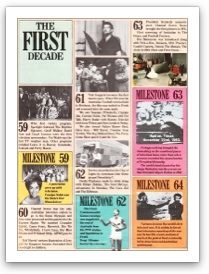
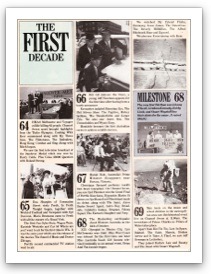
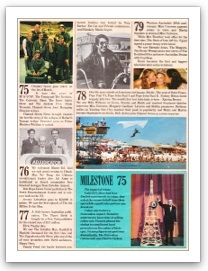
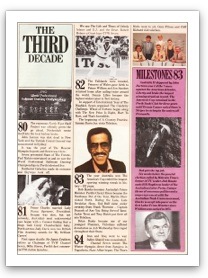
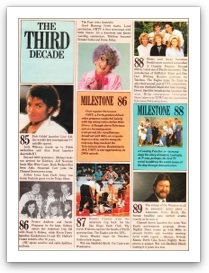



What a fantastic site! I did appear as a guest on Loyd Lawson’s afternoon program and – if I remember correctly – again as a guest on a Sunday religious segment. Also was featured in Coralie Condon’s “The Good Oil”. I remember so many of Seven’s personalities. We were all involved together at a very exciting time in WA’s TV history.
It’s a delightful day to be able to read an article that is so clearly research and written. I be fascinated very much enjoyed this data content. Your layout is excellent. I will come back again.
I was appointed Melbourne manager in 1983 after Bill Drewe resigned. Bill & I opened the Melbourne sales offices of TVW channel 7 and SAS channel 10 in January 1980.Responsibilities included radio 6ix and The Western Mail newspaper.
I’m hoping you could possible help me I’m trying to find a interview on the death of Elvis Presley there was an episode with my parents on talking about the kids of there idol Elvis Presley my parents names are Gus & Kaye conti mums could of been Kaye masin my parents are passed away And I for so long have been trying to find it so I praying you could help me greatly appreciated sincerely Amanda
Anything from the early 70’s black & white minstrel show?